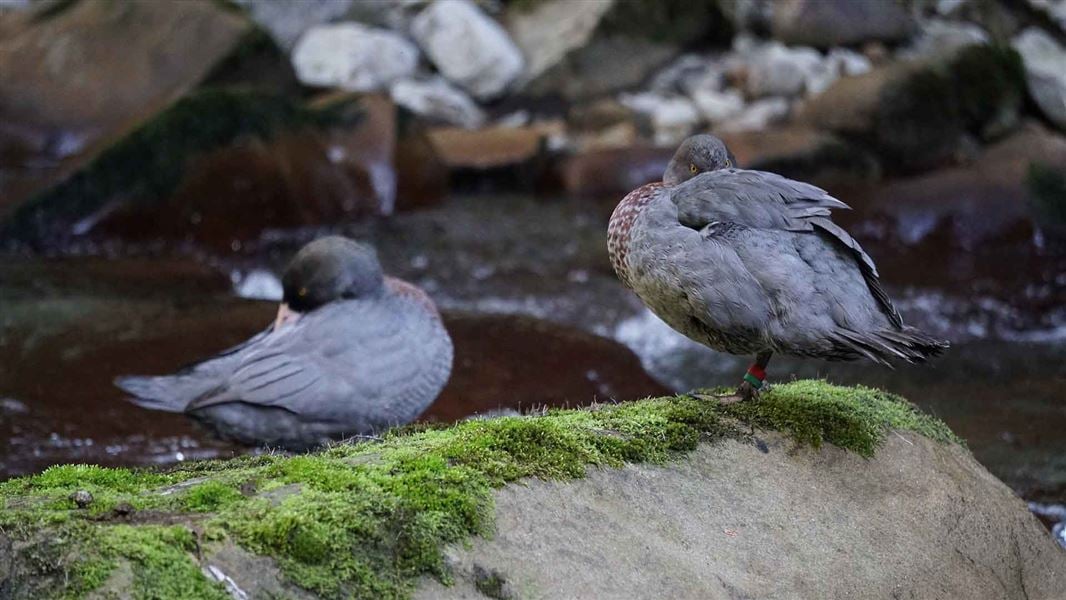Archived content: This media release was accurate on the date of publication.
Date: 22 April 2022
Whio/blue duck are thought to live to about 12 years but Tūmanako has lived to more than 14 years of age in the wilds of the Wangapeka River catchment.
The plucky duck was one of seven female whio released on the South Branch of the Wangapeka River in March 2008. They had been taken as eggs from wild pairs in Kahurangi National Park and reared at the Isaac Conservation and Wildlife Trust facilities in Christchurch to boost the Wangapeka-Fyfe Whio Security Site population.
DOC science technicians monitoring whio in the park first discovered Tūmanako was missing her left wing below the “elbow” joint about five years ago. It’s not known how the wing was severed but the wound had healed over.
“We saw Tūmanako recently with her mate and were impressed she had made it to 14 years, possibly setting a new age record for whio,” said DOC science technician Jason Malham.
“Life would be tougher with the lower part of her wing missing as it would impede her movement. She wouldn’t be able to fly and whio also use their wings for power when hopping from boulder to boulder in the river. She also lives in a rugged stretch of river with a steep gradient and numerous boulders as big as tables and cars.”
Tūmanako is only known to have bred in 2012 but unfortunately the eggs were lost through predation, possibly by a weka.
The Wangapeka-Fyfe Whio Security Site was started in 2003 to provide a protected area to grow and secure a whio population. It now covers 85 kilometres of trapped waterway in the Wangapeka, Fyfe, Rolling and upper Karamea rivers. A population count found 79 pairs in the site last year, surpassing the target of 50 pairs.
This was achieved through 18 years of predator control and management, with the support of Genesis Energy through its Whio Forever partnership with DOC, the Isaac Conservation and Wildlife Trust, and contractors and community volunteers who do the hard yards to help maintain stoat traps to protect the whio.
Background information on whio
- The whio is a threatened species of native duck found only in New Zealand’s fast flowing waters. With an estimated nationwide population of less than 3000 birds, whio are rarer than some species of kiwi.
- Whio are adapted to live on fast-flowing rivers so finding whio means you will also find fresh, fast-flowing water with a good supply of plants and underwater insects.
- This makes whio important indicators of ecosystem health – they only exist where there is quality fresh water and an abundance of life.
- Whio cannot be moved to predator-free islands like other species because of their reliance on fast-flowing rivers.
Contact
For media enquiries contact:
Email: media@doc.govt.nz
